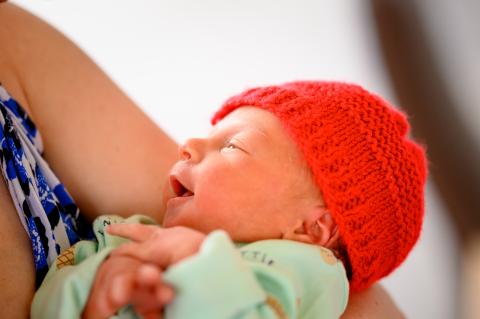Maternity visiting policy
Maternity visiting update
You can find out our latest information for visitors and support partners:
COVID-19 testing for inpatients and admissions
All patients will be asked to complete a COVID-19 screening questionnaire and have a COVID-19 lateral flow test on admission. If you're symptomatic or classed as vulnerable you'll be offered a PCR test (which is sent to the lab) so we can make sure you are cared for in an appropriate environment.
Routine scans and outpatient appointments
We advise you to attend scans and appointments alone wherever possible. This is so we can maintain social distancing and help keep you, your family and our staff safe.
We understand that at some scans and appointments it's important for you to have the support of a partner or companion.
You can bring 1 support partner to all planned scans and outpatient appointments at:
- St Thomas' Hospital
- our community midwife clinics
Your partner should not attend if they are showing symptoms of COVID-19.
Please arrive no earlier than 10 minutes before your planned appointment time. If you arrive earlier, please wait outside of the hospital.

Fetal medicine unit (light blue zone)
Please do not arrive early for appointments as the fetal medicine unit waiting area is quite small. This helps us to maintain social distancing.
Ultrasound (pink zone)
We'll direct you to the women's ultrasound waiting area.
Antenatal clinic
Please wait in the antenatal clinic waiting area. If there is not enough space, please wait in in a seating area located along one of the corridors. Reception staff can help you.
Maternity assessment unit (MAU)
Please wait in the MAU waiting area. If it is too crowded, partners will be asked to wait outside on the ground floor until you are seen. This is so we can maintain social distancing and keep you, your family and our staff safe.
Visiting policy for maternity inpatients and during labour
Your partner should not come to the hospital if they have any symptoms of COVID-19.
Your partner can stay with you during labour and birth if they test positive for COVID-19 using a lateral flow test but do not have any symptoms.
They will have to stay in the birth room and follow our infection control policy at all times. This includes wearing a face mask.
They will be asked to return home after the birth.
You can bring 2 named support partners during the induction of labour phase.
Please follow the instructions of our clinical teams about infection control requirements.
We recommend that partners do not stay overnight unless necessary. This is so you're able to rest.
Hospital birth centre and home from home birth centre
If you're admitted in established labour you can have 2 birth partners stay with you during labour and birth.
You cannot switch birthing partners during established labour.
Your birthing partners should not leave the hospital during this period.
After you've given birth, your 2nd birthing partner can stay for 4 hours but then must leave.
In the obstetric high dependency unit, 1 birth partner can stay for 4 hours after you've given birth.
Visiting times are from 1pm to 8pm. Partners are not allowed to stay overnight.
No children are allowed to visit, including siblings.
1 visitor can stay with you on the antenatal ward between 9am and 8pm. Between 3pm and 8pm you're allowed an additional visitor.
If you're being induced, your partner can stay with you overnight. Please talk to the midwives about this.
Visitors are asked to limit the number of times they leave the department or move around the hospital.
1 visitor can stay with you on the postnatal ward. Your visitor can be with you at all times, including overnight.
Between 3pm and 8pm you're allowed an additional visitor.
Visitors are asked to limit the number of times they leave the department or move around the hospital.
No children under the age of 16 years old are allowed to visit, unless they are your own children.
Visiting policy for emergency attendances
If you come to our maternity assessment unit (MAU) or early pregnancy and gynaecology unit (EPAGU) in an emergency, you should go straight to the department.
Last updated: December 2023